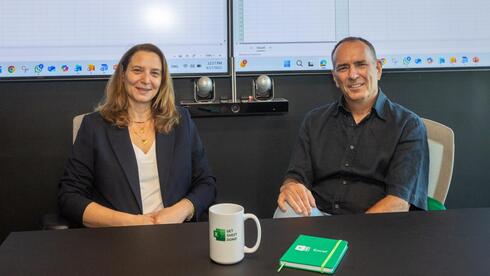Last Tuesday marked the 40th anniversary of Excel, one of the most powerful and influential tools ever created by the global software industry. When Microsoft’s now-legendary spreadsheet program was born — originally for Apple’s rival Macintosh computer — it wasn’t the first of its kind. Its predecessor, Lotus 1-2-3, still dominated the market.
What began as a simple, focused tool for accountants and bookkeepers evolved into a global powerhouse that helped drive the personal computing revolution. From students to CEOs, from startups to governments — Excel is now used by some 800 million people worldwide.
6 View gallery
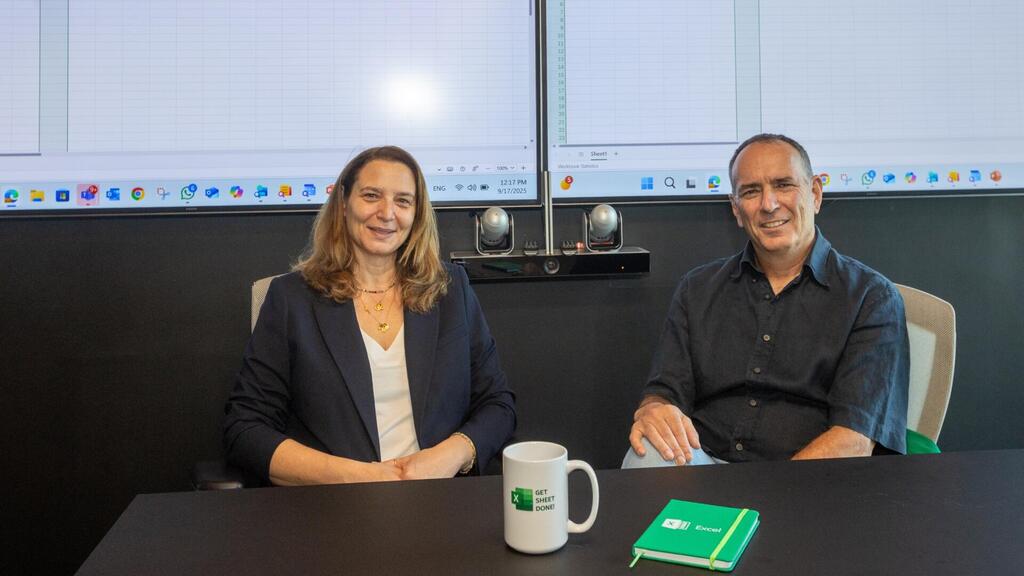

Tamar Tzruya Bar-Zakai and Yair Helman
(Photo: Ido Erez)
What is less known is that a decisive share of this phenomenal success — which has earned Microsoft billions over the years — belongs to hundreds of engineers in Excel’s Israeli development center in Herzliya, and to the two people who lead it: Tamar Tzruya Bar-Zakai, 54, and Yair Helman, 56. The pair, among Microsoft’s longest-serving and most senior executives (Helman has been with the company for 28 years, Tzruya for “only” 16), both live in Even Yehuda and have played a key role in transforming Excel — especially over the past decade — from a technical, even dull spreadsheet into a dynamic online platform now undergoing a revolution through artificial intelligence.
Tzruya has also become something of a Microsoft celebrity. Over the past two years, her short instructional videos on Microsoft Israel’s Instagram and TikTok pages have drawn millions of views, tens of thousands of likes, and countless shares.
“Even before I joined the team,” she says, “I managed my whole household in Excel — tracking family expenses, comparing mortgage offers and for simpler things too. I used to travel abroad a lot, and when my parents came to look after the kids, they always found a printed Excel sheet waiting — a daily schedule showing what to put in each child’s sandwich, when school ends, which kid needs to go to which activity and when, who drives, who picks up. My father always told my sisters, ‘Learn from Tami — she’s got it all on one organized sheet, no questions asked.’”
In the tech world, Tzruya and Helman are rare birds — both in age and tenure. “When I started here as a student,” laughs Helman, “I swore I wouldn’t be like my father, who worked his entire life at one company. And here I am, still at Microsoft.”
6 View gallery


Helman is Microsoft’s Vice President and Head of Excel Core Engineering, responsible for the product’s technical backbone. Under his leadership, the team launched Excel’s first online version in 2010, which made it accessible via any web browser without installation. His team also developed features such as “Flash Fill,” which lets users input a few examples and automatically generates a matching formula, and tools that allow importing data directly from the internet or even from a photo of a table.
Helman, a father of three including 26-year-old twins, was born in Kiryat Bialik and grew up in Ma’alot. “I was a computer whizz,” he recalls. “My father worked at Rafael (state-owned defense technology company), bought a computer and I somehow taught myself to program.” After serving in an elite IDF unit, he studied computer engineering at the Technion. He joined Microsoft as a student, working for years in search, cybersecurity and databases. In 2014, after a four-year posting at company headquarters in Seattle, he joined the newly formed Excel group in Israel.
If Helman oversees development, Tzruya — born in Jerusalem and also a mother of three — leads product management, setting Excel’s vision, strategy and user experience. She is one of four global Microsoft executives who shape Excel’s worldwide direction.
“I’ve always loved technology,” she says. “For years, my father proudly told everyone that the doorbell in our house was built by his daughter when she was seven.”
6 View gallery
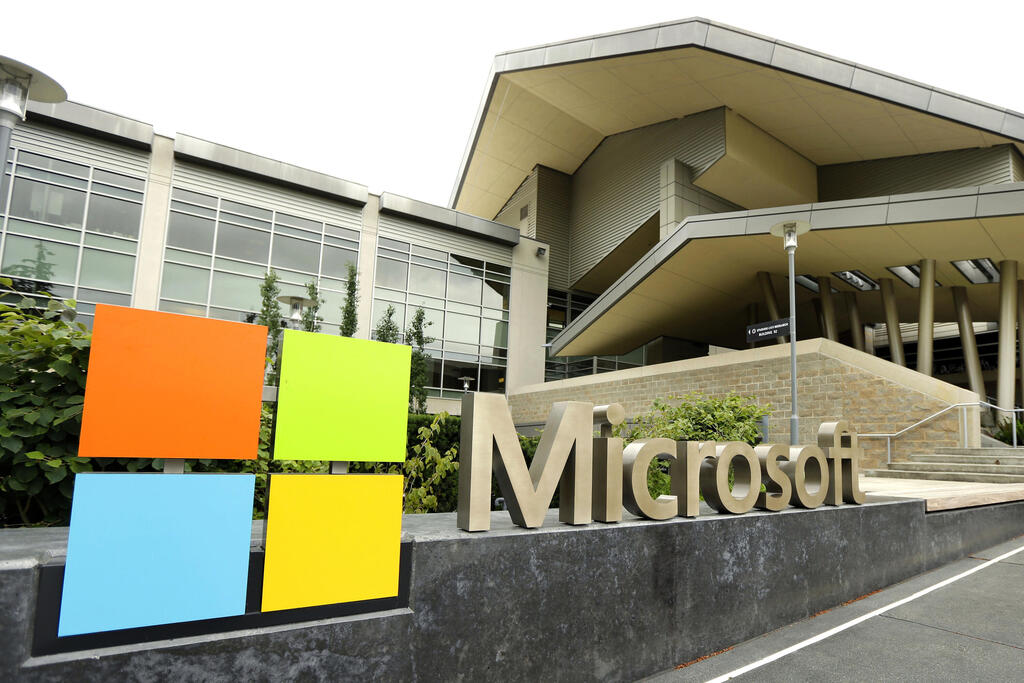

Microsoft HQ in Seattle
(Photo: AP\Ted S. Warren)
She served as an operations clerk in the Israeli Air Force and later studied computer science, statistics and operations research at Tel Aviv University. She then spent nine years at Nokia-Siemens Networks, managing teams in Israel, India, China and Poland.
After the birth of her third daughter, she joined Microsoft — “I was looking for a change,” she says — and soon moved with her family to Seattle, where she headed Outlook’s anti-spam division.
Originally designed for a niche audience of finance professionals who needed a fast and accurate way to perform complex calculations, Excel’s appeal has expanded dramatically over time. Today, virtually every business — large or small — uses it to manage and analyze data, from sales tracking to inventory control.
It has become the default software for anyone dealing with information: HR managers, marketers, project leaders, even journalists. Students use it to plan coursework, researchers to analyze data, families to budget expenses and artists to create unusual works of digital art.
6 View gallery


World Excel Championship
(Photo: Screengrab)
Each year, Las Vegas even hosts the World Excel Championship (FMWC) — a three-day marathon of formulas and problem-solving. The most recent final was broadcast live on ESPN and YouTube, attracting more than 100,000 viewers.
When did the turning point come — the one that made Excel what it is today?
Helman: “In 1994–95, there were two key breakthroughs. The first was the ability to create filters — for example, to take tens of thousands of rows of data and focus only on quarterly sales in Asia. The second was the addition of VBA, an easy internal programming language that allowed anyone to create automated actions that couldn’t be defined by formulas. Suddenly, people who weren’t trained in programming could build their own personalized solutions for their specific needs. Overnight, VBA became the most popular programming language in the world. In 2007, we increased Excel’s limit from 64,000 rows to one million, turning it into a program capable of handling massive amounts of data.”
Tzruya: “And then came the ability to collaborate on shared files. Imagine you and I working on the same spreadsheet simultaneously: I update one cell while you update the same one, and you want to hit Undo on your last change. How do you make sure you don’t cancel mine?”
Helman: “The most dramatic change happened when Satya Nadella became CEO. In the old days, we used to say, ‘Windows is ours — we’ll build the best products for it.’ He changed the mindset completely. He decided we needed to bring our products to wherever users are — to Mac, to Android, to iPhone, even to the browser. That’s how we created Excel for the Cloud, accessible from any web browser and capable of performing exactly the same calculations as the desktop version. It was a tectonic shift — one that demanded huge investments in both funding and manpower.”
6 View gallery
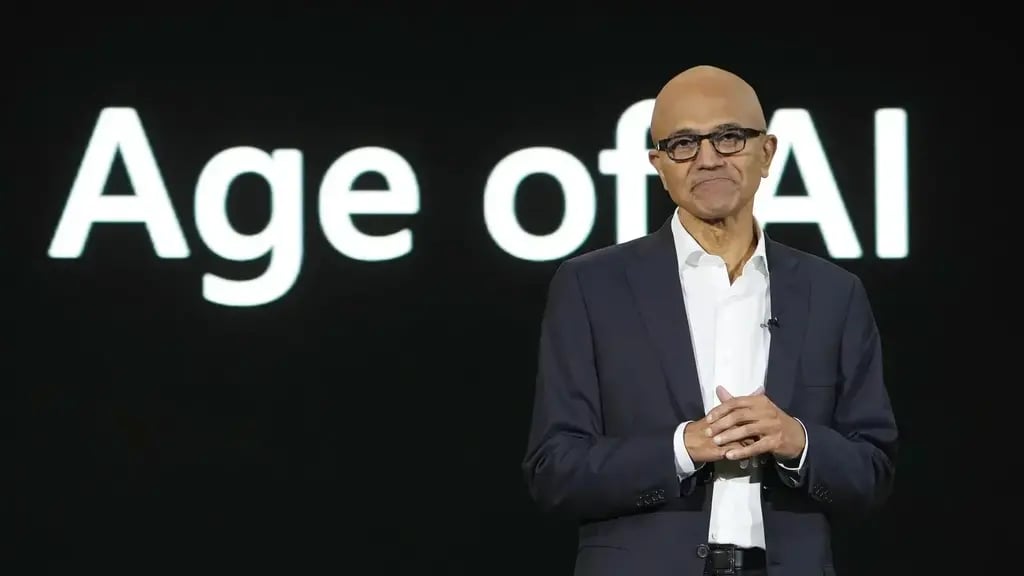

Microsoft CEO Satya Nadella
(Photo: Bloomberg)
Tzruya: “The cloud eliminated all the complexity of version management, installations, compatibility, and training. The software is always up to date — ‘through the air.’ Today, anyone opening Excel on any device or platform sees the same thing. From that point on, we were able to turn Excel Online into a platform for innovation. We draw on an incredible fan community eager to contribute and influence the product, which lets us constantly test new ideas.”
In recent months, Microsoft has begun integrating advanced artificial intelligence tools into Excel. The new version, equipped with Copilot, Microsoft’s AI assistant, can analyze text, suggest more efficient ways to organize data, “clean” errors and inconsistencies and generate complex formulas based on natural-language instructions. It can even identify hidden insights in data and automatically produce summaries and reports.
“Forgive me,” the interviewer interjects, “but for me Excel has always been a mysterious world of tables, formulas and numbers I have no idea how to handle.”
Tzruya: “Excel was always used at home too, but mostly by people who knew what they were doing — how to organize data, what formulas exist, how to calculate sums or averages. I remember speaking at a teachers’ conference in London, performing some very basic action in Excel, and suddenly hearing a collective ‘wow’ from the audience. Most people simply didn’t know the program could do that.
6 View gallery
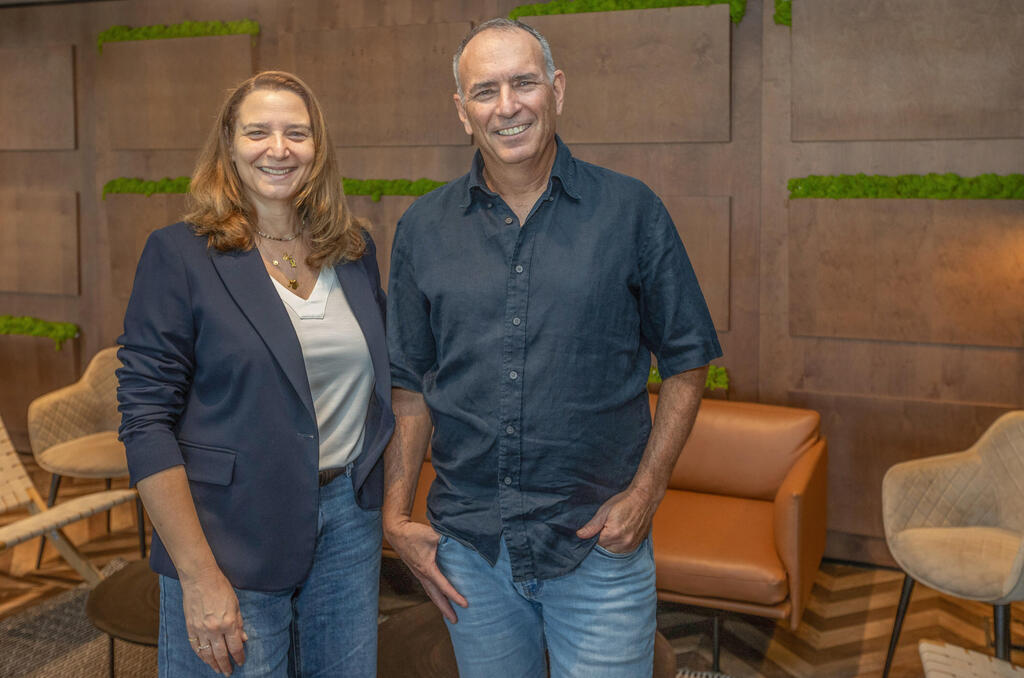

“Today, with AI and Copilot, you no longer need to be an expert. And we’re proud that our team here in Israel is responsible for key parts of that transformation.”
How do you reach users who struggle to find their way around spreadsheets?
Tzruya: “There’s already a chat option built into Excel. Say you have data about all your salespeople and want to know who the top three were in a certain region over specific months. You can just ask the question in plain language — and get the answer instantly. We also explain what we did, step by step, in simple terms.”
So, I can give Excel a task just like I’d ask ChatGPT?
Tzruya: “Exactly. And in Excel, you don’t even need to provide the data — we gather it for you behind the scenes. And if you don’t like the result, you can simply write, ‘I didn’t mean 2024 — I meant 2025.’”
How organized does the source data need to be?
Tzruya: “One of the things we’re working on here in Israel is enabling Excel to understand data. Sometimes you don’t even have to tell it what you want — once you’ve built a table once, Excel learns it, translates it into a formula and tomorrow, next week or next year, it will calculate it the same way automatically.”
Does Excel’s AI suffer from the same “hallucinations” seen in other AI tools?
Helman: “Once Excel understands what you want and you approve it, the code, or formula, runs from that point on with 100 percent accuracy and consistency over time. At that stage, the calculation no longer depends on AI; it’s a formula. So there’s none of the random element that causes those ‘hallucinations.’”
Could there ever be an Excel without tables?
Tzruya: “Yes. You can work entirely through chat or with an agent — just ask for what you want in natural language. But ultimately, to turn your request into something structured and repeatable, we translate it into data — into a formula, a table or a piece of code, some kind of Excel element. It turns out that presenting information in a tabular format is still the most intuitive for users.
“For example, say you have a customer database and you want to send each of them a personalized New Year’s greeting. You type a sample message, and Excel figures out what you want to do. It fills out the entire table for you, opens a window explaining what it did and why, you approve it, and a formula is created. Next time you add a new customer, the process happens automatically.”
How do you know the new features are actually successful?
Tzruya: “When we first launched Excel Online, we saw that most users didn’t edit files at all. Over time, light editing began, then heavier editing, and suddenly users were creating functions, adding tables and we saw a jump in both usage and returning users. It was a complete transformation. We’re seeing the same thing now with AI — once people realize it just works. I don’t even write formulas myself anymore. I tell the chat what I want, give it one or two examples, and it works.”
How do you decide what to add or remove from the software?
Tzruya: “We have a process involving ‘rings’ of customers who get experimental versions and give feedback. Excel has a huge fan community — individuals and large companies — so we constantly test ideas with them.
“One thing you learn quickly as a product manager is humility: you don’t know everything. When we started developing Excel Online and I had to set priorities, I thought, ‘Who prints anything anymore? We don’t need a print command.’ Then we found out that 20 percent of users still print. So no matter how diverse my team is, we can’t always predict what hundreds of millions of users will want.”
I assume you have ways to measure all this.
Tzruya: “Of course. Microsoft tracks every detail — new sign-ins, user retention, returning users and more. Over time, we learned that simply knowing how many licenses you’ve sold isn’t enough. If users don’t get real value, they won’t renew. So it’s crucial to see how actively they use Excel in the first month after purchase, then in the next three months, and so on — and to measure how often they use each feature.”
Do you know who your users are?
Helman: “Absolutely not. We’re committed to the highest levels of privacy. I’m not allowed to know who you are, your age, your job or what formula you wrote — nothing. But we can analyze statistics. We bend over backward to understand users’ needs in other ways and improve accordingly. You, as an individual, aren’t identifiable, but we can see through our internal analytics that tens of thousands of people work in Excel the same way you do.”
Tzruya: “In other words, we can know if people with lower Excel proficiency are using the program — it doesn’t matter if they’re doctors, taxi drivers or plumbers.”
What will Excel look like five years from now?
Tzruya: “With the pace of technology today, it’s impossible to predict exactly where we’ll be in five years. But I can say that AI will meet users right at the ‘work floor,’ giving them smart suggestions to boost speed and efficiency.
“Beyond that, users will converse with Excel. On one side of the screen you’ll see the chat, and on the other, the spreadsheet evolving in real time — side by side, like Google Translate. With what we’re doing now in AI, we’re influencing how hundreds of millions of people work every day. We’re changing the world.”
Helman: “The needs will remain the same, but we’ll make the solutions simpler and more accessible.”
And will we need fewer workers?
Helman: “No. With the same number of employees, we’ll simply be able to achieve much more. If in the past they worked with 30 clients, now they’ll be able to work with 300 — and you’ll gain a deeper understanding of your business, guiding it toward more precise markets. We’ll reach places we couldn’t even imagine before.”
Tzruya: “I’m not sure if it’s bizarre, but in Japan, people write their résumés in Excel. Many people also use Excel for art: they turn each cell into a pixel, fill it with color, and create incredible digital works.”
Helman: “When I started here as a student, I swore I wouldn’t be like my father, who worked his entire life in one company. Twenty-eight years later, I’m still at Microsoft. We’re a group of 10 to 15 people with similar seniority, all now holding senior positions in Israel.”
Digital art: Artists use Excel’s table cells as pixels to build intricate works, reshaping each cell into a perfect square. The Israeli company Datarails even created the world’s first NFT art collection made entirely in Excel, depicting scenes from the war in Ukraine.
Video games: Excel’s geometric grid provides the perfect canvas for retro-style games. Independent developers have used Excel’s internal VBA programming language to create versions of Snake, Tetris, Minecraft and Monopoly. The most popular of all: Pac-Man in Excel.
Robotics design: By combining formulas and VBA commands, Excel can simulate the movements of an industrial robot and show how it reacts to different commands.
Physics simulations: Excel can even simulate physical processes — for example, the motion of a bullet. By entering parameters such as speed and angle, users can calculate its trajectory and plot its exact path.
Microsoft’s unofficial relationship with Israel is unusually close. Its Israeli development center was the company’s first outside the United States and remains one of its three most important hubs worldwide. Around 30 different product groups develop Microsoft’s most sensitive core technologies in Israel — roughly half of them, ironically, in cybersecurity, privacy and data protection.
True, the company’s bond with Israel is first and foremost pragmatic: the talent, drive and creativity found here are worth a fortune. But anyone who has followed Microsoft’s internal culture over the years knows it runs deeper than that. The company has acquired Israeli firms, partnered with startups, helped local organizations integrate its technologies and donates millions each year to a vast range of social causes.
In 2023, it launched an Israeli cloud region, allowing secure local data storage. It was no coincidence that CEO Satya Nadella personally met with the head of Unit 8200 in 2021 to formalize the unit’s use of Microsoft’s cloud servers. Nor was it a coincidence that, immediately after the October 7 attacks, Microsoft offered its cloud services and infrastructure to Israel’s defense establishment — without hesitation — to assist in the effort to rescue the hostages.
Over the past two years, however, the heads of all major tech companies have faced immense pressure to cut ties with Israel. Pro-Palestinian employees comb through internal emails searching for “evidence,” law firms are hired to reexamine contracts, and protests disrupt corporate events. “Your technology reeks of blood,” demonstrators accuse. “It’s killing children in Gaza.”
That charge rides the global wave of outrage but also strikes a moral nerve for these companies — both in the eyes of their worldwide customers and, often, their own families. No global CEO can ignore that kind of moral scrutiny, heightened by the horrific images on TV screens.
At first, Microsoft tried to hold its ground, citing an external review that cleared it of any direct military involvement with Israel. But after a detailed Guardian investigation, the company came under renewed pressure and was forced to order another, deeper inquiry.
Israel, for its part, could have spared itself this fiasco. At such a sensitive time, it could have paid closer attention to Microsoft’s quiet warnings and been more careful not to violate usage terms — we were given a finger; why take the whole hand? When the red lights began flashing, Israel could have stepped back in time.
There will likely be no state commission of inquiry into this blunder — but we will all pay the price.

